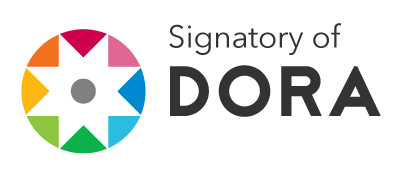Pheidole protaxi sp. nov. (Hymenoptera: Formicidae), new species from tabuleiro forests of the Atlantic Forest biome
DOI:
https://doi.org/10.13102/sociobiology.v62i4.866Keywords:
Taxonomy, Pheidole protaxi sp. nov., “Tabuleiro” forests.Abstract
Hereafter a new species of Pheidole Westwood, 1839 (Hymenoptera: Formicidae) is described from Southern Bahia in Brazil, after the morphology of its minor and major workers. This taxon is easily distinguished from any other congeneric species by a unique combination of characters.Downloads
References
Bolton, B. (1994). Identification guide to the ant genera of the world. Harvard university press, Cambridge, Mass, USA, 222p.
Bolton, B. (2014). An online catalog of the ants of the world. http://antcat.org. (accessed date: 6 June ,2015).
Eady, R. D. (1968). Some illustrations of microsculpture in the Hymenoptera. Proceedings of the royal entomological society of london, vol. 43, pp. 66–72.
Eguchi, K. (2008). A revision of north vietnamese species of the ant genus Pheidole. Zootaxa, 1902:1-118.
Gauld, I. & Bolton, B. (1988). The Hymenoptera. Oxford University Press, Oxford .12 + 322 pp.
Goulet, H. & Huber, J. T. (eds.) (1993). Hymenoptera of the world: an identification guide to families. Research branch, Agriculture canada publication 1894/E. Ottawa: Canada Communications Group, vii + 668 pp.
Harris, R. A. (1979). A glossary of surface sculpturing. Occasional papers on systematic entomology, vol. 28, pp. 1–31.
IBGE (2012). Manual técnico da vegetação brasileira: sistema fitogeográfico, inventário das formações florestais e campestres, técnicas e manejo de coleções botânicas, procedimentos para mapeamentos. Instituto Brasileiro de Geografia e Estatística, Rio de Janeiro, 2a Ed, IBGE 275p.
Keller R. A. (2011). A phylogenetic analysis of ant morphology (Hymenoptera: Formicidae) with special reference to the poneromorph subfamilies. Bulletin of the american museum of natural history, 355: 1–90. http://www.bioone.org/doi/full/10.1206/355.1
Kugler, C. (1994). A revision of the ant genus Rogeria with description of the sting apparatus (Hymenoptera: Formicidae). Journal of hymenoptera research 3:17-89.
Longino, J. T. (2009). Additions to the taxonomy of new world Pheidole (Hymenoptera: Formicidae). Zootaxa 2181:1-90.
Moreau, C. S. (2008). Unraveling the evolutionary history of the “hyperdiverse” ant genus Pheidole (Hymenoptera: Formicidae). Molecular hylogenetics and evolution, 48, 224–239. Evol. (2008), doi:10.1016/j.ympev.2008.02.020
Naskrecki, P. (2008). Mantis v. 2.0 - A manager of taxonomic information and specimens. URL: http://insects.oeb.harvard.edu/mantis.
Richards, O. W. (1956). Hymenoptera – introduction and keys to families. Handbooks for the identification of british insects. London, Roy. Ent. Soc. Lond., 6:1-94.
Thomas W. W. (2003). Natural vegetation types in southern Bahia. In: Prado P.I., Landau E.C., Moura R.T., Pinto L.P.S., Fonseca G.A.B., Alger K. (orgs.). Corredor de Biodiversidade da Mata Atlântica do Sul da Bahia. Publicação em CD-ROM, Ilhéus, IESB/CI/CABS/UFMG/UNICAMP.
Wilson, E. O. (2003). Pheidole in the New World: a dominant, hyperdiverse ant genus. Harvard university press, Cambridge, 794 p.
Downloads
Published
How to Cite
Issue
Section
License
Sociobiology is a diamond open access journal which means that all content is freely available without charge to the user or his/her institution. Users are allowed to read, download, copy, distribute, print, search, or link to the full texts of the articles in this journal without asking prior permission from the publisher or the author. This is in accordance with the BOAI definition of open access.
Authors who publish with this journal agree to the following terms:
- Authors retain copyright and grant the journal right of first publication with the work simultaneously licensed under a Creative Commons Attribution License that allows others to share the work with an acknowledgement of the work's authorship and initial publication in this journal.
- Authors are able to enter into separate, additional contractual arrangements for the non-exclusive distribution of the journal's published version of the work (e.g., post it to an institutional repository or publish it in a book), with an acknowledgement of its initial publication in this journal.
- Authors are permitted and encouraged to post their work online (e.g., in institutional repositories or on their website) prior to and during the submission process, as it can lead to productive exchanges, as well as earlier and greater citation of published work (See The Effect of Open Access).



 eISSN 2447-8067
eISSN 2447-8067










